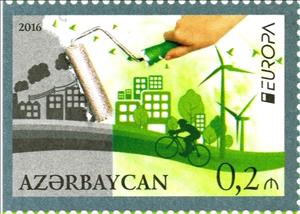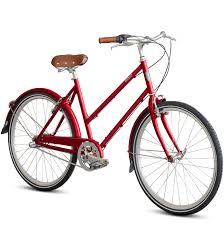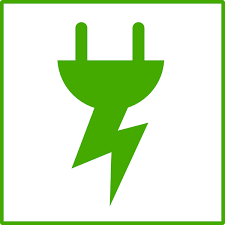Stamp: Europa - Think green (Azerbaijan 2016)
Europa - Think green (Azerbaijan 2016)
25 January (Azerbaijan ) within release Europa (C.E.P.T.) 2016 - Think Green goes into circulation Stamp Europa - Think green face value 0.20 Azerbaijani manat
| Stamp Europa - Think green in catalogues | |
|---|---|
| Michel: | Mi: AZ 1140D |
Stamp is square format.
Also in the issue Europa (C.E.P.T.) 2016 - Think Green:
- Stamp - Think green face value 0.20;
- Stamp - Think green face value 0.60;
- Stamp - Think green face value 1;
- Souvenir Sheet - Think green face value 1;
- Stamp - Europa - Think green face value 0.20;
- Stamp - Europa - Think green face value 0.20;
- Stamp - Europa - Think green face value 0.60;
- Stamp - Europa - Think green face value 0.60;
- Stamp - Europa - Think green face value 1;
- Souvenir Sheet - Europa - Think green face value 1;
- Booklet - Europa - Think green face value 3.20;
- Stamp - Europa - Think green face value 0.20;
- Stamp - Europa - Think green face value 0.60;
- Booklet Pane - Europa - Think green face value 3.20;
- Full Pane - Europa - Think Green face value 10*0.20;
- Full Pane - Europa - Think Green face value 10*0.20;
- Full Pane - Europa - Think Green face value 10*0.60;
- Full Pane - Europa - Think Green face value 10*0.60;
Stamp Europa - Think green it reflects the thematic directions:
A bicycle, also called a pedal cycle, bike, push-bike or cycle, is a human-powered or motor-assisted, pedal-driven, single-track vehicle, with two wheels attached to a frame, one behind the other. A bicycle rider is called a cyclist, or bicyclist.
Birds (Aves), a subgroup of Reptiles, are the last living examples of Dinosaurs. They are a group of endothermic vertebrates, characterised by feathers, toothless beaked jaws, the laying of hard-shelled eggs, a high metabolic rate, a four-chambered heart, and a strong yet lightweight skeleton. Birds live worldwide and range in size from the 5 cm (2 in) bee hummingbird to the 2.75 m (9 ft) ostrich. They rank as the class of tetrapods with the most living species, at approximately ten thousand, with more than half of these being passerines, sometimes known as perching birds. Birds are the closest living relatives of crocodilians.
A building or edifice is a structure with a roof and walls standing more or less permanently in one place, such as a house or factory. Buildings come in a variety of sizes, shapes and functions, and have been adapted throughout history for a wide number of factors, from building materials available, to weather conditions, to land prices, ground conditions, specific uses and aesthetic reasons. Buildings serve several needs of society – primarily as shelter from weather, security, living space, privacy, to store belongings, and to comfortably live and work. A building as a shelter represents a physical division of the human habitat (a place of comfort and safety) and the outside (a place that at times may be harsh and harmful).
In physics, energy (from Ancient Greek ἐνέργεια (enérgeia) 'activity') is the quantitative property that is transferred to a body or to a physical system, recognizable in the performance of work and in the form of heat and light. Energy is a conserved quantity—the law of conservation of energy states that energy can be converted in form, but not created or destroyed. The unit of measurement for energy in the International System of Units (SI) is the joule (J).
Environmental protection is the practice of protecting the natural environment by individuals, groups and governments.Its objectives are to conserve natural resources and the existing natural environment and, where it is possible, to repair damage and reverse trends.
A hand is a prehensile, multi-fingered organ located at the end of the forearm or forelimb of primates such as humans, chimpanzees, monkeys, and lemurs. A few other vertebrates such as the koala (which has two opposable thumbs on each "hand" and fingerprints remarkably similar to human fingerprints) are often described as having "hands" instead of paws on their front limbs. The raccoon is usually described as having "hands" though opposable thumbs are lacking.






